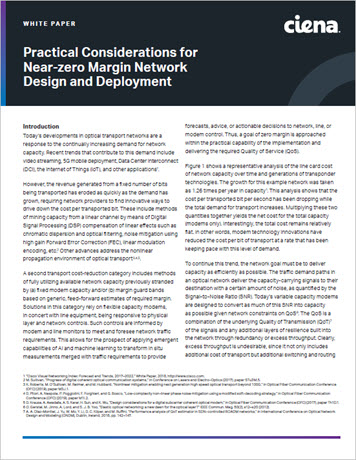Maximizing the delivered capacity of optical transponders by mining the Signal-to-Noise Ratio (SNR) margin to a near-zero level is critical for the economic viability of future optical networks. This paper examines this trend from the equipment design point of view and applies Artificial Intelligence (AI) to the problem of capacity maximization. This bottom-up approach is focused on providing the key metrics built on the fundamentals of network performance, whereas a top-down approach uses machine learning and policy-driven actions that have the promise to achieve an unprecedented level of control. These methods show promise in delivering a practical near-zero margin network deployment.
Practical Considerations for Near-Zero Margin Network Design and Deployment
Related
View more insightsWhite Papers
Heavy Reading: Coherent Pluggable Optics Service Provider Survey 2025
Explore how global operators use 400G and 800G coherent pluggables for DCI, metro, and long haul in this independent 2025 Heavy Reading survey.
DownloadWhite Papers
Zero-trust optical transport: A tiered architecture for metro network resilience
Unlock uninterrupted metro performance with Microsoft and Ciena. Discover a zero-trust approach to resilient optical transport.
DownloadVideos
Ciena Customer Insights Featuring MOX Networks
Allen Meeks, President and CEO of MOX Networks, shares the inspiring journey of MOX with Kevin Sheehan, Ciena’s CTO of the Americas.
Watch




